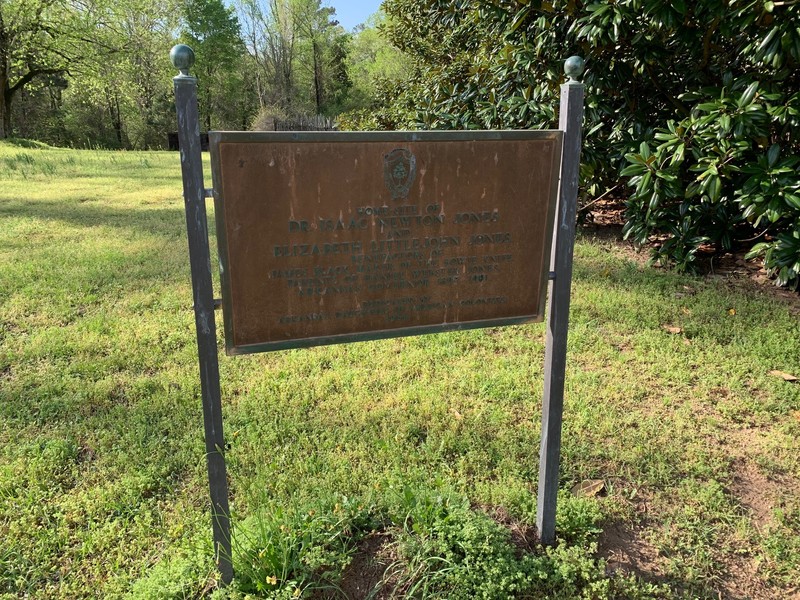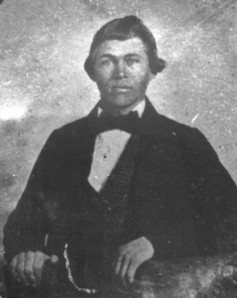Dr. Isaac Newton Jones Homesite
Introduction
Text-to-speech Audio
This site is where Dr. Isaac Newton Jones had his town residence. in 1844, a blind James Black was taken into the care of the Jones family. The Jones home was located next to the large magnolia tree across from the original downtown business district of Washington. The house is no longer standing.
Images
Historical marker erected by the Pioneer Washington Restoration Foundation

Dr. Isaac Newton Jones

Backstory and Context
Text-to-speech Audio
Dr. Isaac Newton Jones was born in North Carolina on June 16, 1797. He graduated from the University of Pennsylvania in 1818. After marrying Elizabeth Littlejohn in 1828, Jones moved to the Red River region, settling first in Bowie County, Texas. By the 1840s, he moved his family to Washington, Arkansas.
In 1844, the court of Hempstead County asked County Clerk Simon T. Sanders to seek out applicants to care for James Black. By this time, James Black was blind and a pauper. Dr. Isaac Newton Jones took James Black into his home and cared for him and was paid $10 a month by the county. Jones hoped he might be able to help Black with his blindness but finally came to the conclusion that nothing could be done. Local teenagers of town, such as Augustus Garland, remembered visiting with James Black while visiting the children of the Jones family. According to family histories, James Black was especially close to the oldest son of the family, Isaac Jones, who died in 1849 at fourteen years of age.
Dr. Jones suddenly died on February 11,1858 from a boiler accident. Jones had a reputation for being stubborn and would not listen to the enslaved persons on his farm who told him the boiler to the cotton gin needed to be shut down due to a crack. He disagreed and ordered the fire to be stoked causing the boiler to explode, killing him instantly.
Sources
Batson, Jr., James L.. James Black and his Coffin Bowie Knives. Huntsville, Alabama. Batson Engineering and Metalworks, 2019.
"The Bowie Knife." Washington Telegraph (Washington) December 8th 1841. , p. 2.
Medearis, Mary. Washington, Arkansas : History on the Southwest Trail. Hope, Arkansas. Copies + Office Solutions, 1984.
Williams, Charlean Moss. The Old Town Speaks : Washington, Hempstead County, Arkansas, gateway to Texas, 1835, Confederate capital, 1863. Houston, Texas. The Anson Jones Press, 1951.
Williams, Joshua. Washington. Images of America. Charleston, South Carolina. Arcadia Publishing, 2014.
Williams, Joshua. Black, James, Encyclopedia of Arkansas . November 18th 2011. Accessed April 15th 2022. https://encyclopediaofarkansas.net/entries/james-Black-2534/.
Williams, Sam. Medearis, Mary. Sam Williams: Printer's Devil, Memorabilia. Hope, Arkansas . Etter Printing Company, 71801.
Historic Washington State Park
Southwest Arkansas Regional Archives
